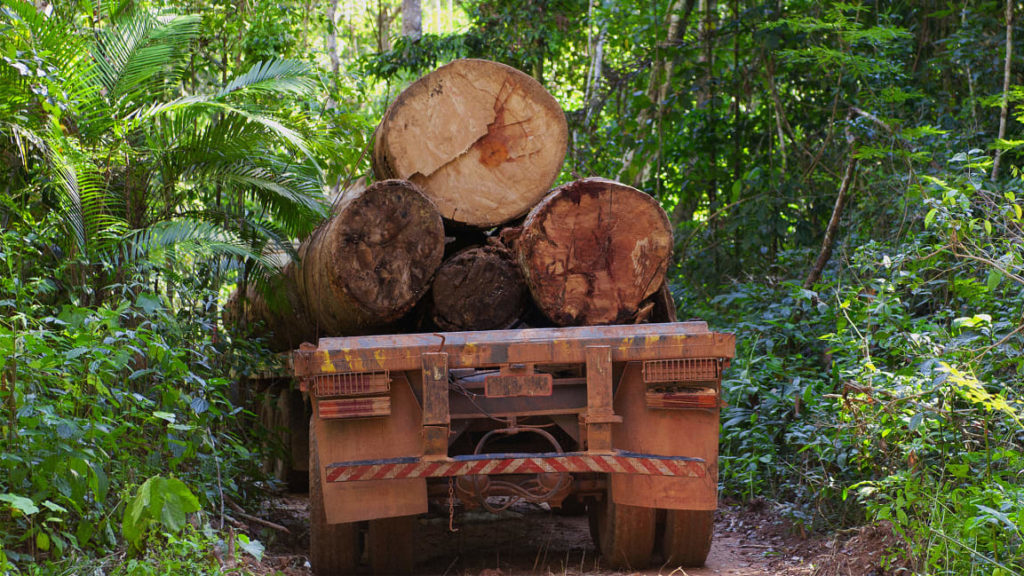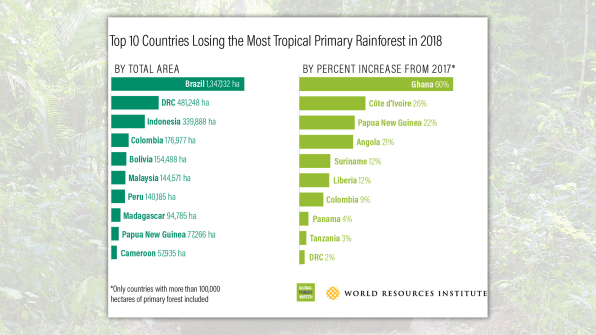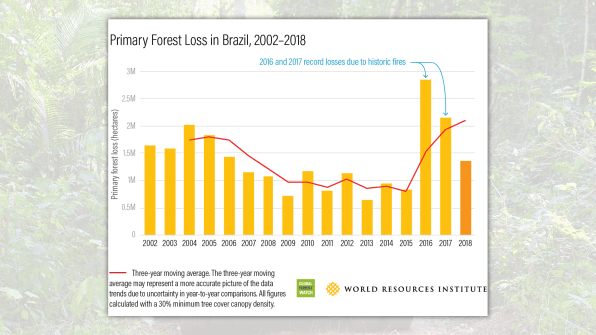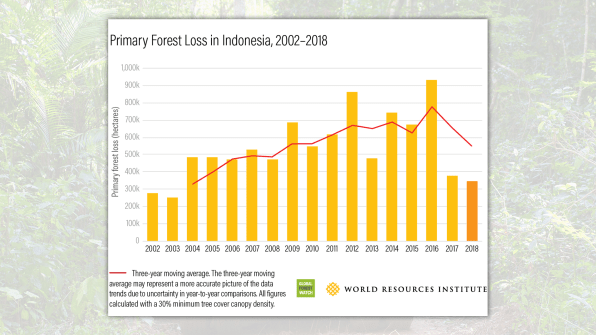
Old-growth rain forests are some of the greatest carbon capture tools on Earth. Because they’ve never been cut, their roots extend deep into the soil, storing extra carbon. Yet in 2018, across the world, 3.9 million hectares of primary rain forest–collectively, an area the size of Belgium–disappeared.
Some of this loss was due to events like wildfires. But much of old-growth forest loss across the world, and the disappearance of 12 million total hectares of tree cover last year, was caused by human activity, a new study from the World Resources Institute’s and the University of Maryland’s joint program, Global Forest Watch.

Using satellite imagery, Global Forest Watch works off a baseline of tree cover from 2000 to assess how much has been lost each year since then. Last year marked the fourth-highest annual loss since 2001. It was also, says Global Forest Watch manager Mikaela Weisse, incorporated for the first time in a second baseline data set that looks specifically at the location and size of old-growth (sometimes also called “primary”) rain forests, and how they’ve changed over time. “So we’re able to see for the first time, when we look at tree cover loss, what is old-growth forest,” she says.

In 2018, Brazil recorded the world’s steepest forest losses: more than 1.3 million hectares. Some of that was due to fire, which also caused by the country’s record-high losses in 2016 and 2017, but most appears to caused by deliberate logging and clearing in the Amazon, a situation being exacerbated by the country’s new president. In countries like Peru, Ghana, and Côte d’Ivoire, the expansion of cocoa farming has resulted in important primary forest loss. Overall, South America and Africa are still struggling to rein in forest loss.
This pattern of forest loss and environmental degradation at the hands of industry are hugely problematic for the future of the planet, as trees are a critical component of combatting climate change. But the Global Forest Watch report is not all bad news. “Indonesia has put in place a number of policies to try to limit new licenses for converting or cutting important forests,” Weisse says. And after a strong fire season burned 2.6 million hectares in the country in 2015, it implemented even stricter regulations to combat forest loss: In 2018, the country’s primary forest loss was 40% less than the average loss rate from 2002 to 2016. Indonesia, Weisse says, is proof that stronger regulations around forest loss can be incredibly effective.

And there’s also hope for reforestation efforts to combat some of the losses of primary forests. While old-growth trees are known for their elevated carbon-capture capabilities, new forests, according to researchers at the Birmingham Institute of Forest Research, can be equally, if not more effective, at storing carbon. The researchers found that reforestation efforts tend to be carried out in areas that are wide open and sunny, which enables fast-growing species to rapidly and efficiently pull carbon from the air. It’s critical that countries work to rein in forest loss, but those that have already experienced stark losses should work as quickly as possible toward replanting what’s been destroyed.
Thanks so much for giving everyone such a remarkable possiblity to discover important secrets from here. It’s usually very superb and as well , jam-packed with amusement for me and my office acquaintances to search the blog really thrice in a week to study the latest tips you have got. And lastly, I am usually motivated concerning the unique techniques you serve. Some 4 facts on this page are certainly the most impressive we have had.
Very nice post. I just stumbled upon your weblog and wished to mention that I’ve really loved surfing around your weblog posts. After all I抣l be subscribing to your rss feed and I am hoping you write again very soon!
Comments are closed.